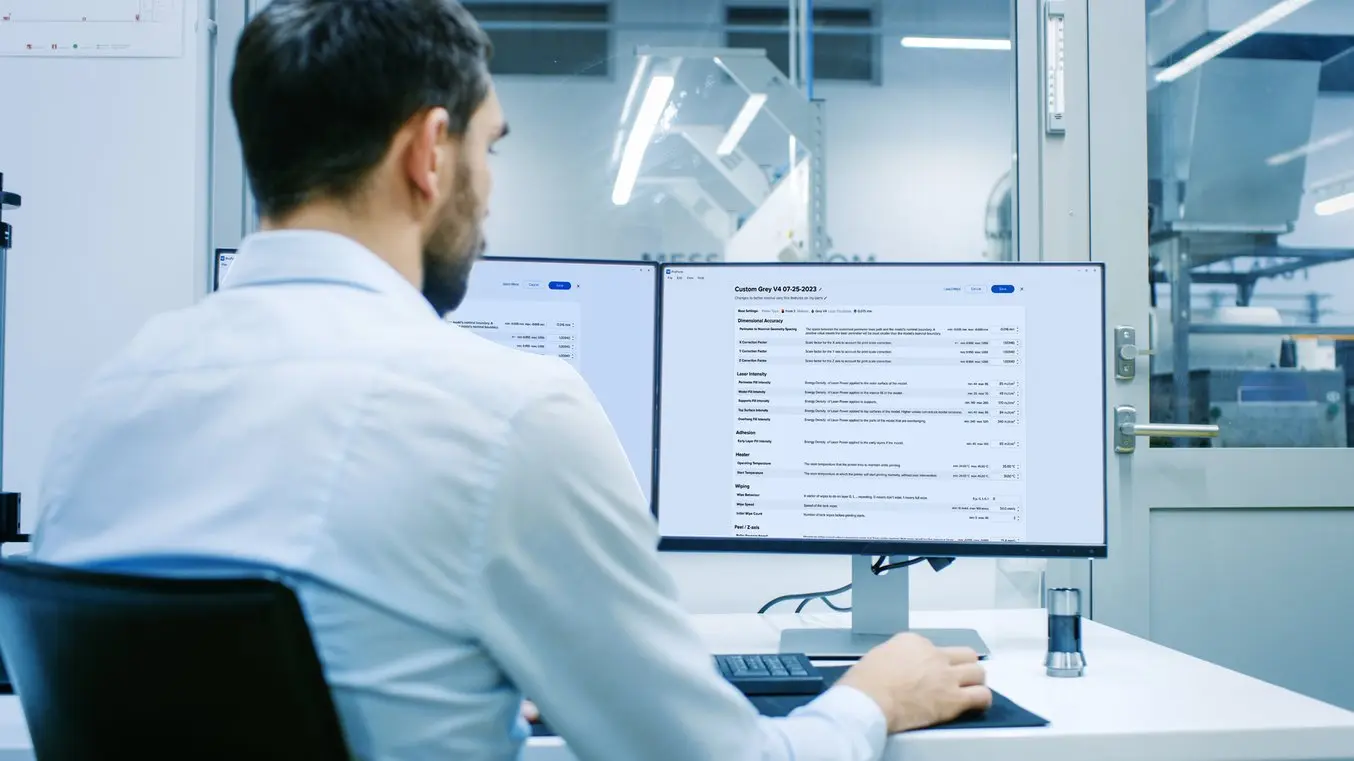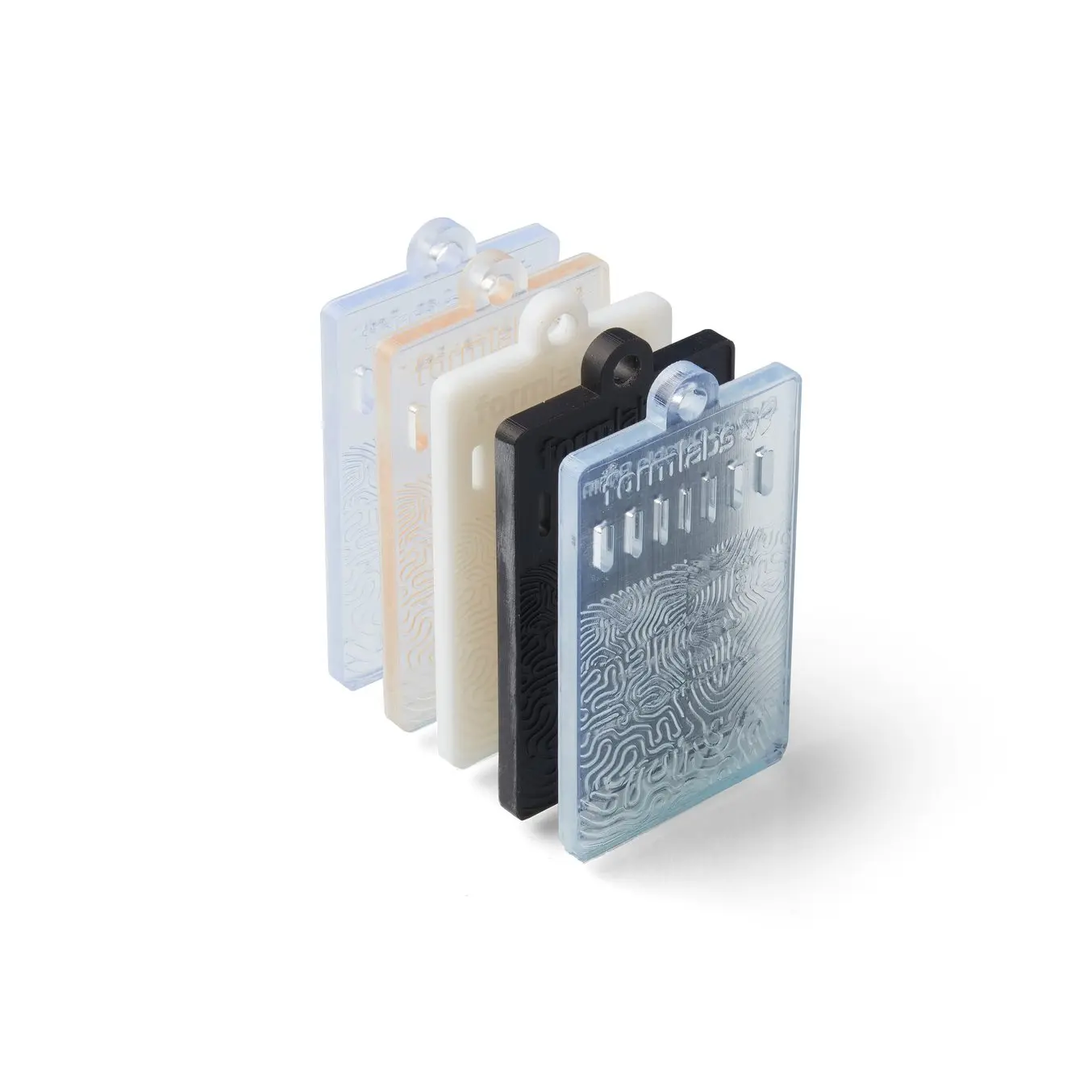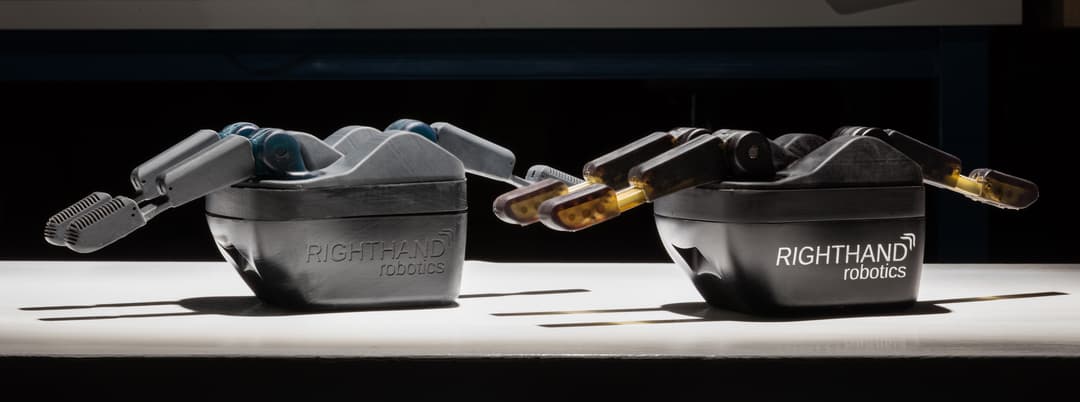If you use a stereolithography (SLA) 3D printer, it’s essential to know how to post-cure your resin 3D prints. Post-curing enables parts to reach the highest possible strength and become more stable. However, each resin behaves slightly differently when post-cured, and requires different amounts of time and temperature to arrive at the material’s optimum properties.
Why Should I Cure Resin Prints?
Each Formlabs resin is formulated with advanced, light-sensitive polymer chemistries. Formlabs stereolithography (SLA) 3D printers use 405 nm lasers to cure the liquid resin, producing a highly accurate solid part. When an SLA part finishes printing, it remains on the build platform in a “green state.” This means that while parts have reached their final form, polymerization is not yet fully completed and the part has yet to attain maximum mechanical properties. Post-curing with light and heat is key to unlocking this last mile of material properties for SLA 3D prints. For biocompatible materials, post- curing is necessary to achieve the safety standards determined by regulatory agencies.
Achieving optimal properties is especially essential when using functional or specialty resins. Form Cure and Form Cure L, the two post-curing solutions from Formlabs, are designed to post-cure parts printed in Formlabs Resins with speed and consistency. Our engineers developed Form Cure and Form Cure L specifically to work with Formlabs Resins, using the same 405 nm light as the lasers in Formlabs SLA 3D printers. Parts are heated and automatically rotated in the reflective chamber to ensure an even and consistent post-cure.
Introduction to Post-Curing Science
Any resin used in SLA 3D printing can be thought of as a highly cross-linked macromolecule, or a continuous network of polymer chains (monomers and oligomers). Within that macromolecule, there are still some reactive groups that can further cross-link the polymer network when exposed to light and heat.
As more cross-links form, material properties, such as modulus and tensile strength, improve. The objective of post-curing is to link as many of these unreacted groups as possible to bring a part to its maximum material properties.
Once optimal material properties are reached, further post-curing of certain resins can sometimes cause brittleness or warping. The post-curing protocol must therefore be specific for both time and temperature in order to avoid curing too much, and will be unique to each resin and part geometry.
Optimal post-curing starts with heat. Rising temperatures increase the energy, and therefore mobility, in the polymer network. This gives reactive groups a higher probability of finding each other and creating more connections. Formlabs post-curing machines, the Form Cure and the Form Cure L, both use a heater to help the curing chamber quickly reach the desired temperature and then maintain it throughout the postcure.
Once the desired temperature is reached, light is introduced. Photons of light activate remaining photoinitiators, causing nearby reactive groups to form bonds and finish the cross-linking process. With each new cross-link the polymer network becomes more securely linked together and material properties improve.
As more cross-links form in the resin, the network slightly densifies, resulting in some minor shrinkage of the whole part. This is normal for any parts produced with a resin 3D printer. PreForm, Formlabs’ free print file preparation software, automatically compensates for this shrinkage to ensure your post-cured prints are dimensionally accurate to your original CAD designs.

Talk to Our Sales Team
Whether you need to prototype at speed, or are producing end-use parts, we’re here to help. The Formlabs Sales team is composed of dedicated specialists who know exactly how to support you and your company's needs.
How Long Should I Cure Resin 3D Prints?
An ideal post-cure setting achieves the properties you need in the most optimized amount of time. For Formlabs General Purpose Resins, this might be a quick, one-minute cure with Form Cure V2. Where strength, rigidity, and temperature resistance are needed, Formlabs Engineering Resins improve with post-cure of up to 120 minutes, depending on the post-curing hardware used.
Formlabs developed an in-house post-cure study to identify optimized settings for each individual Formlabs Resin. Using the ASTM method, our materials scientists tested a variety of mechanical properties at various temperatures for each material.
Find all up-to-date recommended post-cure settings for Form Cure V2, Form Cure V1, Form Cure L V2, or Form Cure L V1 on our website. Material data sheets with specific mechanical properties after the recommended post-cure are available for download on our website.

Agostino Lobello, Product Development Engineer at Radio Flyer says, “The biggest benefit has to be the reduced warp and the better dimensional accuracy that we see out of Form Cure L, which saves us time getting mating assemblies to come together.” Learn more here.
Biocompatible Materials and Post-Curing
As more dental and medical professionals adopt 3D printing in their workflows, 3D printing companies have to ensure that the entire process is controlled to consistently manufacture high performing parts with biocompatible safety for the end user. Biocompatibility requirements require careful adherence to these pre-approved processes, and this applies to the post-cure step of the printing process as well.
Formlabs technology has been validated in FDA-cleared workflows, which means that for each resin intended for use in a biocompatible application, there are certain printing, washing, and curing steps that must be followed without deviation in order for the final part to be considered a biocompatible device.
The Form Cure and Form Cure L are important parts of these workflows. After careful testing and a thorough regulatory process, the validated settings for post-cure times ensure that each printed part for biocompatible applications has optimal mechanical properties and is consistently safe for use.
Find specific post-curing recommendations for each material in the Manufacturing Guide for each material.

BioMed Resin Swatches
Each BioMed Resin swatch features embossed and debossed designs, 0.5-2.0 mm cutout thicknesses, as well as regulatory information unique to that resin.
Methodology
An ideal post-cure setting achieves the properties you need in optimal time. Formlabs developed an in-house post-cure study to identify optimized settings for each individual Formlabs Resin. Using the ASTM method, our materials scientists tested a variety of mechanical properties at various temperatures for each material.
To see how post-curing influences mechanical properties, this example looks at changes in the tensile modulus, which shows a change in stiffness of a part, for each resin over time in Form Cure or Form Cure L. An object with a higher tensile modulus will have a greater resistance to changing shape under stress. Modulus of elasticity is closely related to how completely crosslinked photopolymer chains are within the part, which is why Formlabs uses modulus to represent overall completeness of post-curing.
The “green” shape of a model is formed by curing the resin during printing, but some potential polymer connections remain unbonded. Cross-linking the remaining polymer proportionally improves strength, stiffness, and temperature resistance. Post-curing also causes some part shrinkage. Formlabs measures accuracy and mechanical properties based on a standard post-cure of parts, and material settings are tuned to account for shrinkage under the same conditions. Some resins do not require post-curing, but mechanical properties will change if post-cured.
Example: Recommended Post-Cure Settings for Rigid 4000 Resin

In this example, Rigid 4000 Resin exhibits a sharp rise in modulus of elasticity over the first 15 minutes of post-curing, increasing by 116%. After 15 minutes, no further improvements are observed.
Rigid 4000 Resin is a glass-filled composite material designed for parts requiring high stiffness and strength, as well as low deformation under load. Post-cure directly increases strength and stiffness by further crosslinking the polymer matrix surrounding microparticles of glass, holding them rigidly in place. Post-cure of Rigid 4000 Resin is substantially impacted by temperature. At higher temperatures, a large improvement in modulus of elasticity is gained over a short period of time. Post-curing beyond 15 minutes will not affect properties but will begin to cause cosmetic yellowing, and is not recommended. For most applications of Rigid 4000 Resin, post-cure for 15 minutes at 80 °C in Form Cure.
Post-Cure Troubleshooting
The most common issues encountered when post-curing parts are under-curing and warping. If parts seem weaker or less rigid than expected, they may be insufficiently post-cured. Undercuring can occur when a part is particularly thick or large, as larger parts take longer to heat. Light alone cannot post-cure much beyond the surface of a part, which is why Form Cure and Form Cure L apply both heat and light. If a part is significantly larger or thicker than Formlabs’ test geometries, it may require a longer post-curing time or higher temperatures to reach a full internal post-cure.
Warping during post-cure may occur if a part is especially thin, and is not equally exposed to light on all sides. Form Cure and Form Cure L help prevent warp by rotating the part on a turntable during post-curing, and by exposing the part to light from all directions — including underneath the turntable.
Post-cured parts also tend to be more brittle than green parts. Typically, as modulus increases elongation will decrease; because of this, over-cured parts can be undesirably brittle.
Post-Cure Hardware
Many methods for post-curing exist, from curing simply with light (natural sunlight, UV nail salons, UV curing stations, DIY UV cure boxes, etc.) to using both light and heat. Heat accelerates the process and enables even more complete bond formation, resulting in increases in material properties impossible to achieve with light alone.
Formlabs released the first post-cure hardware product made specifically for Formlabs resins in early 2017, Form Cure V1. Updates to Form Cure and large-format Form Cure L have since reduced post-curing time by up to 6x.
Form Cure and Form Cure L, the two post-curing solutions from Formlabs for desktop and large-format SLA professional 3D printers, are designed to post-cure parts printed in Formlabs Resins with speed and consistency. With pre-set time and temperature settings for each of the Formlabs resins, Form Cure and Form Cure L take the guesswork out of the post-cure process, and also enable users to safely print biocompatible resins that meet the requirements for the biocompatible class or device. When new resins are released, users simply update the firmware on their Form Cure to get the specific time and temperature for optimal material properties.
Form Cure uses a 405 nm light source, which was determined through an extensive internal testing process to be the most effective at creating the best modulus and tensile strength in parts printed on Formlabs printers. In comparison, when the time and temperature were the same, but a 365 nm light source was used, the modulus reaches only 67% as that of the 405 nm samples. There is a significant difference in the post-cured properties at each wavelength, especially so at shorter post-cure times.

Though the Form Cure L has the size to post-cure large parts, it can also be used to efficiently post-cure many small parts for batch production. A dental lab may have five Form 4B 3D printers, but need only one Form Cure L to cure all their parts at once, saving time, space, and labor.
Get Started With Curing SLA Resin 3D Prints
Formlabs makes it easy to complete your SLA 3D printing workflow with large volume and small volume curing options. After extensive internal and externally validated testing, the Form Cure and Form Cure L make scaling SLA production easier than ever.
Pre-programmed settings for Formlabs materials make it easy to post-cure parts in Form Cure and Form Cure L. Additionally, new presets can be saved. To start easily curing parts, buy Form Cure, or Form Cure L for large parts or high-throughput applications. For a comprehensive, up-to-date list of resin curing times and temperatures, check out our support site resources:
Explore Form Cure and Form Cure L or contact sales to learn more.


